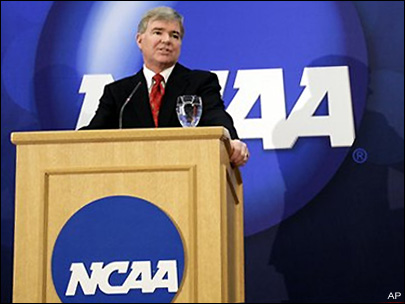Deconstructing the NCAA’s New Penalty Structure
Posted by rtmsf on August 3rd, 2012Christopher Johnson is an RTC columnist. He can be reached @ChrisDJohnsonn.
After meting out unprecedented sanctions just over a week ago against Penn State’s football program in response to the Jerry Sandusky child sexual molestation scandal and alleged cover-up of high ranking officials within the program, it appears the NCAA is leading a charge to ramp up the severity of future penalties in keeping with the precedent established in this watershed case. NCAA leaders reached a consensus Thursday on a new proposal endorsing a revised four-tier penalty structure that includes many of the same punitive measures handed down last week against the Nittany Lions, including hefty fines, up to four years’ postseason ban, and suspensions for head coaches. Far more significant is the radical shift in both the process used to interpret violations and the culpability of coaches in either concealing or enabling forbidden activity. Under the new punishment structure — which is expected to be voted into approval at the Board of Directors’ Meeting in October — coaches will be held accountable for any violations committed by members of their staffs, with suspensions awaiting any coach unable to prove innocence in any wrongdoing.
The new guidelines also call for increasing the size of the infractions committee from 10 to 24 members, a modification designed to streamline the enforcement process, which has been widely denounced in recent years for its lumbering proceedings. In the wake of the most heinous and unconscionable scandal in the history of intercollegiate athletics, these changes provide a measure of legitimacy to the NCAA’s handling of the Penn State scandal and pushback for those who criticized the organization for their misplaced priorities throughout the enforcement process. Many chided NCAA president Mark Emmert for overstepping his bounds in bypassing the infractions committee and fast tracking the harsh punitive measures, fearing he was setting a dangerous precedent with the breadth and severity of the sanctions along with the hasty and unprecedented procedure used to deliver those penalties. By legislating a speedier decision in implementing a harsher punitive scale for violations, the new guidelines represent a step forward in support of Emmert’s recent actions. That NCAA leaders were overwhelmingly supportive of similar measures disputes the notion that Emmert operated without the consent and backing of organization members.










































